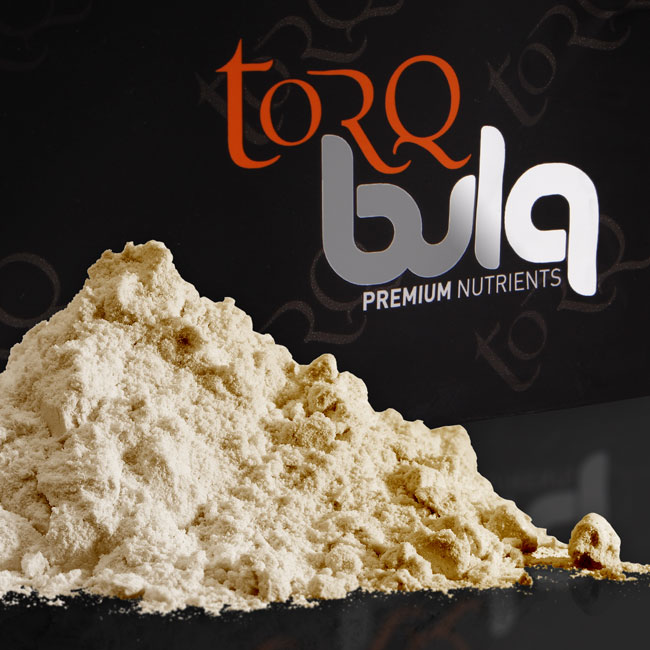Pea Protein Powder
Product Highlights
- 80% Protein Content
- Reduces Muscle Soreness
- Assists in Post-Exercise Recovery
- Promotes Muscular Adaptation
- Promotes Glycogen Replenishment
- Promotes Positive NET Protein Balance
- Suitable for Vegans
Product Summary
Pea Protein Isolate is a protein sourced from pea seeds, rich in the essential amino acids, leucine, isoleucine and valine. These essential amino acids play a vital role in the regulation of muscle protein synthesis (building) and therefore creates a positive NET protein balance. Pea Protein Isolate shares similar digestion kinetics (rate of digestion) to whey based protein sources and therefore, can be found readily available in the blood soon after digestion allowing a more robust anabolic environment. Thus, leading to improved recovery of both muscle fibres, energy producing apparatus and enzymes. Due to this rich protein sourced from vegetable extract, it is perfectly suitable for vegetarians and vegans.
Product Usage
1 level scoop provides 15 g of TORQ Pea Protein Isolate powder, supplying 12g of high quality Pea Protein.
As an athlete/physically active person, you should aim to consume 20-25g of protein every 3-4 hours (5-6 times per day) and this can be achieved through a variety of means including ensuring protein content is sufficient in meals.
30g (2 level scoops) of TORQ Pea Protein Isolate provides 24g of protein and can be added to any food or beverage to help you to achieve this goal. These regular feeding intervals will allow you to meet your dietary protein requirements of 1.4 – 2g per kg of body weight per day, optimising physiological adaptation and maintaining lean muscle mass.
Immediately after heavy exercise, we recommend consuming TORQ Recovery Drink (we have both Pea and Whey protein versions), but when the exercise is more power-based like weight/resistance training or short 15-second intervals, TORQ Pea Protein Isolate is perfect due to it’s minimal carbohydrate content.
Technical Information
Protein Background: An amalgamation of literature over the past decade has highlighted the importance of nutrition on adaptations to exercise training, with key considerations surrounding type, timing and quantity of protein and carbohydrate ingestion. Protein is essential for roles such as functional (cellular adaption) and structural (muscle fibre) repair post exercise. Furthermore, the role of protein regulates the activity of enzymes, improving the efficiency of cells that allow us to produce energy powering exercise. For any training athlete, the consideration of protein turnover on recovery and adaptation is paramount to performance. Proteins within the body are in a continual state of turnover and for individuals looking for adaptations to training, it is essential that protein synthesis (production) exceeds the rate of degradation (breakdown) through regular feeds of protein.
It is recommended that athletes and physically active people consume 20-25g Protein every 3-4 hours throughout the day (5-6 servings per day).
Proteins are constructed from individual amino acids joined together to create a polypeptide chain. Once a polypeptide chain has undergone various steps of “manufacturing” it becomes a functional protein. With respect to training athletes we acknowledge the role of proteins on muscle structure, function and metabolism and therefore, it is universally accepted that rich sources of dietary protein is paramount to recovery and adaptation. Proteins are constantly being produced and broken down within the human body, however if muscle protein degradation (breakdown) exceeds muscle protein synthesis (production) it results in a negative net protein balance which will ultimately limit and impair adaptations to training.
Muscle protein synthesis is initiated after a signalling molecule (also a protein) detects a change within the cellular environment from rest. This change of cellular environment may be nutritional, hormonal or mechanical (exercise). With exercise, we stimulate both muscle protein synthesis and degradation signalling factors, and therefore, if sufficient protein isn’t available, a negative protein balance will result.
For many endurance athletes, protein is associated with an increase in whole body muscle mass and power, which conflicts with the image of the lightweight endurance-focused athlete they see in the professional arena. However, it must be noted that the required training adaptation is stimulated via the exercise bout and not the dose of protein ingested. Therefore, an endurance athlete may require similar protein quantities as a resistance training athlete but the changes in muscle function will be associated with fuel utilisation and strength rather than muscle size and power.
Research has concluded that when protein and carbohydrate are co-ingested immediately post exercise, the replenishment of stored muscle glycogen content is quicker compared to high carbohydrate alone. Furthermore, the rate of replenishment remains higher for a longer period of time. This finding proposes positive implications for athletes that compete across a multi-stage events where the window for glycogen replenishment post exercise is narrow.
Interestingly, as mentioned above, muscle protein synthesis can be stimulated via regular feeds of 20-25g of protein evenly spaced every 3–4 hours. During periods of high training volume, this method has shown to be effective in maintaining a positive net protein balance. TORQ Pea Protein Isolate can be used to help you to achieve this goal by filling in the ‘protein gaps’ when a not eating a meal as such.
If you are not vegan, also consider TORQ Whey Protein Concentrate, TORQ Protein Fusilli, TORQ Protein Orzo and TORQ Protein Crisps.
Pea Protein is Similar to Whey Protein: Pea Protein Isolate has been shown to have a similar branched chain amino acid profile to whey based protein sources, whilst also maintaining a similar rate of digestion. Research from Koopman et al., (2007) noted that protein synthesis of young males was 20% higher following ingestion of a leucine enriched protein-carbohydrate beverage compared to a non-leucine enriched carbohydrate-protein beverage, thus highlighting the importance of this branched chain amino acid availability on recovery. The branched chain amino acid profile of Pea Protein coupled with high rate of digestion allows for re-stimulation of muscle protein synthesis (building) in the hours after exercise stimulating a positive NET protein balance allowing for optimal recovery.
Protein for Weight Loss: One of the most important components of a weight loss diet is the addition of sufficient protein intake. Protein is one of the most satiating macro nutrients, leaving us feeling full and reducing the dreaded hunger. This helps with diet compliance, one of the most important factors for diet success. Protein also requires the greatest amount of energy to digest and process, equivalent to twice the amount required for fat or carbohydrates. This is referred to as the thermic effect of food and is a component of daily energy expenditure. So, an increase in protein intake can also help to slightly increase total daily energy expenditure.
Weight loss often leads to the degradation of lean muscle mass, which is rarely a desirable consequence, particularly for athletes. The combination of exercise and increased protein intake can prevent this loss of lean muscle mass when in a period of calorific deficit, ensuring performance is maintained. With this approach, weight loss may take a little longer, however, diet compliance will be improved and changes to body composition will be advantageous to performance.
Further Reading: If you’re interested in learning more about protein and the performance benefits of regular daily protein intake, please take the time to read our Protein, Performance and 20-25g Protein Recipes article.
Nutritional Information
Ingredients: 100% Pure Pea Protein.
Protein Content: 80%
| per 100g serving | |
|---|---|
| Energy (kJ) | 1507 |
| Energy (Kcal) | 343 |
| Protein (g) | 80.1 |
| Carbohydrates (g) | 4.4 |
| Fat (g) | 0.02 |
| Salt (g) | 2.9 |
| Vitamin E (mg) | 2.0 |
| Calcium (mg) | 208 |
| Iron (mg) | 24.2 |
| Zinc (mg) | 9.6 |
| Selenium (µg) | 216 |
No Colours // No Flavours // No Artificial Sweeteners // No Preservatives // Suitable for Vegans
Allergy Information: No Allergens.
If you have any questions about this product or any other on this website, please don’t hesitate in contacting us at enquiries@torqfitness.co.uk or on 0344 332 0852.
Research
- Babault, N., Païzis, C., Deley, G., Guérin-Deremaux, L., Saniez, M.H., Lefranc-Millot, C. and Allaert, F.A., 2015
Pea proteins oral supplementation promotes muscle thickness gains during resistance training: a double-blind, randomized, Placebo-controlled clinical trial vs. Whey protein. Journal of the International Society of Sports Nutrition, 12(1), p.3. - Hulmi, J.J., Lockwood, C.M. and Stout, J.R., 2010
Effect of protein/essential amino acids and resistance training on skeletal muscle hypertrophy: A case for whey protein. Nutrition & metabolism, 7(1), p.51. - Impey, S.G., Hammond, K.M., Shepherd, S.O., Sharples, A.P., Stewart, C., Limb, M., Smith, K., Philp, A., Jeromson, S., Hamilton, D.L. and Close, G.L., 2016
Fuel for the work required: a practical approach to amalgamating train‐low paradigms for endurance athletes. Physiological reports, 4(10), p.e12803. - Koopman, R., Saris, W.H., Wagenmakers, A.J. and van Loon, L.J., 2007.
Nutritional interventions to promote post-exercise muscle protein synthesis. Sports medicine, 37(10), pp.895-906. - Paddon-Jones, D., Westman, E., Mattes, R.D., Wolfe, R.R., Astrup, A. and Westerterp-Plantenga, M., 2008.
Protein, weight management, and satiety. The American journal of clinical nutrition, 87(5), pp.1558S-1561S. - Pasiakos, S. M., Cao, J. J., Margolis, L. M., Sauter, E. R., Whigham, L. D., McClung, J. P., … & Young, A. J. (2013).
Effects of high-protein diets on fat-free mass and muscle protein synthesis following weight loss: a randomized controlled trial. The FASEB Journal, 27(9), 3837-3847.









